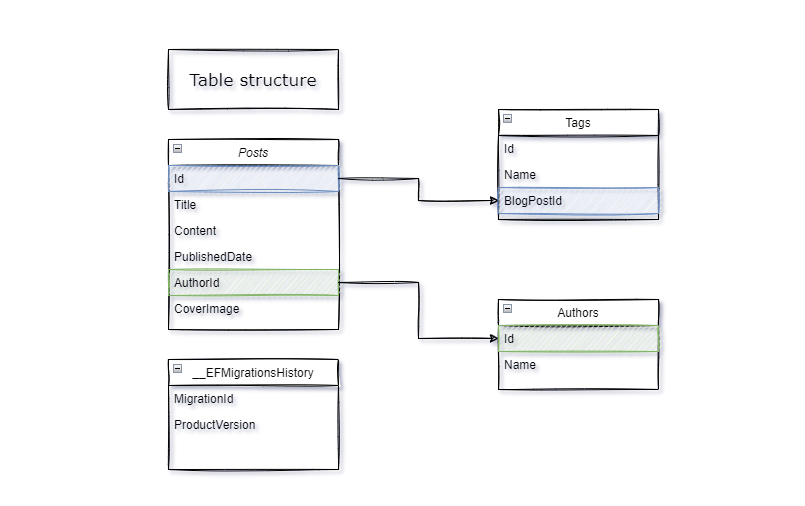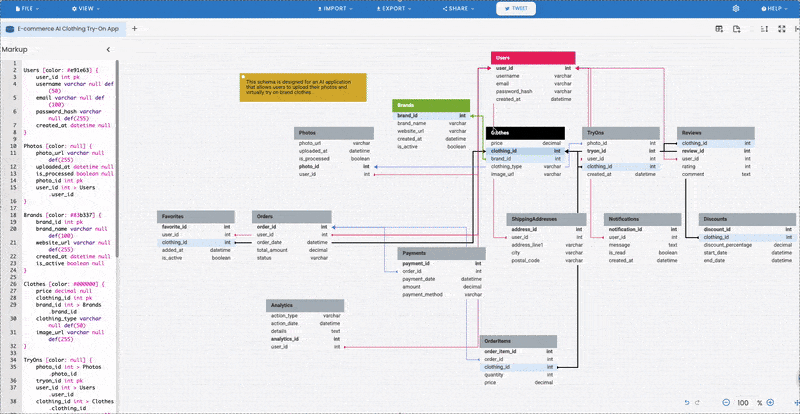In the world of modern Java development, the bridge between the object-oriented paradigm of our applications and the relational structure of databases has always been a critical challenge. This “object-relational impedance mismatch” led to boilerplate-heavy solutions like raw JDBC, which were cumbersome and error-prone. The Java Persistence API (JPA), now part of the Jakarta EE specification, emerged as the standard solution, providing a powerful abstraction layer that simplifies data persistence and allows developers to work with database entities as if they were regular Java objects.
For any developer working on Java backend systems, from monolithic Java Enterprise applications to distributed Java microservices, a deep understanding of JPA is non-negotiable. It is the backbone of data layers in popular Java frameworks like Spring Boot, which leverages its power through the Spring Data JPA module. This article provides a comprehensive deep dive into JPA, covering its core concepts, practical implementation with Hibernate, advanced techniques, and crucial performance optimization strategies. Whether you’re a beginner in Java programming or a seasoned professional looking to refine your skills, this guide will equip you with the knowledge to use JPA effectively in your next Java REST API or web application.
Understanding the Core Concepts of JPA
At its heart, JPA is a specification, not an implementation. It defines a set of interfaces and annotations for managing relational data in Java applications. The most popular implementation is Hibernate, which is the default provider in Spring Boot. To use JPA effectively, you must first grasp its three fundamental building blocks: Entities, the EntityManager, and the Persistence Context.
Entities: Your Java Objects as Database Rows
An entity is a simple Plain Old Java Object (POJO) that is mapped to a table in a relational database. This mapping is achieved through annotations. The @Entity annotation marks a class as a JPA entity, while the @Id annotation designates the field that corresponds to the primary key of the database table. Other annotations like @Column, @Table, and @GeneratedValue provide finer control over the mapping.
Let’s look at a practical example of a Product entity. This is a foundational concept in Java basics for database interaction.
package com.example.jpa.model;
import jakarta.persistence.Column;
import jakarta.persistence.Entity;
import jakarta.persistence.GeneratedValue;
import jakarta.persistence.GenerationType;
import jakarta.persistence.Id;
import jakarta.persistence.Table;
import java.math.BigDecimal;
@Entity
@Table(name = "products")
public class Product {
@Id
@GeneratedValue(strategy = GenerationType.IDENTITY)
private Long id;
@Column(name = "product_name", nullable = false, length = 255)
private String name;
@Column(precision = 10, scale = 2)
private BigDecimal price;
private int stockQuantity;
// Constructors, Getters, and Setters
public Product() {}
public Product(String name, BigDecimal price, int stockQuantity) {
this.name = name;
this.price = price;
this.stockQuantity = stockQuantity;
}
// ... getters and setters omitted for brevity
}
The EntityManager: Your Gateway to the Database
The EntityManager is the primary interface you use to interact with the database through JPA. It provides the API for all persistence operations, such as creating, reading, updating, and deleting (CRUD) entities. Think of it as the main workhorse for your data access layer. Key methods include:
persist(entity): Makes a new entity instance “managed,” queuing it for insertion into the database.find(Entity.class, primaryKey): Retrieves an entity by its primary key.merge(entity): Merges the state of a detached entity into the current persistence context.remove(entity): Marks an entity for deletion from the database.
The Persistence Context: A First-Level Cache
This is perhaps the most crucial yet often misunderstood concept in JPA. The Persistence Context is a set of managed entity instances that exist in a particular transactional scope. When you use entityManager.find(), JPA first checks the persistence context. If the entity is already there, it returns the managed instance without hitting the database. This acts as a first-level (L1) cache, improving Java performance. Any changes made to a managed entity within an active transaction are automatically detected and synchronized with the database when the transaction commits—a feature known as “dirty checking.”
Implementing Data Relationships and Queries with JPQL

Real-world applications rarely deal with isolated tables. Data is interconnected through relationships. JPA provides a powerful and intuitive way to model these relationships directly in your entity classes. It also offers a portable, object-oriented query language called JPQL to retrieve data.
Mapping Relationships: @OneToMany and @ManyToOne
JPA supports all standard database relationships: one-to-one, one-to-many, many-to-one, and many-to-many. These are defined using annotations. The most common pairing is @OneToMany and @ManyToOne, which models a parent-child relationship.
Let’s model a scenario where a CustomerOrder can have multiple OrderItems. This is a classic use case in Java web development and e-commerce platforms.
// In CustomerOrder.java
package com.example.jpa.model;
import jakarta.persistence.*;
import java.time.LocalDateTime;
import java.util.ArrayList;
import java.util.List;
@Entity
@Table(name = "customer_orders")
public class CustomerOrder {
@Id
@GeneratedValue(strategy = GenerationType.IDENTITY)
private Long id;
private LocalDateTime orderDate;
@OneToMany(mappedBy = "order", cascade = CascadeType.ALL, orphanRemoval = true)
private List<OrderItem> items = new ArrayList<>();
// ... other fields, constructors, getters, setters
}
// In OrderItem.java
package com.example.jpa.model;
import jakarta.persistence.*;
import java.math.BigDecimal;
@Entity
@Table(name = "order_items")
public class OrderItem {
@Id
@GeneratedValue(strategy = GenerationType.IDENTITY)
private Long id;
private String productName;
private int quantity;
private BigDecimal price;
@ManyToOne(fetch = FetchType.LAZY)
@JoinColumn(name = "order_id")
private CustomerOrder order;
// ... constructors, getters, setters
}
In this example, mappedBy = "order" on the @OneToMany side indicates that the OrderItem entity “owns” the relationship. The @JoinColumn on the @ManyToOne side specifies the foreign key column in the order_items table. The cascade = CascadeType.ALL ensures that persistence operations (like save or delete) on a CustomerOrder are propagated to its associated OrderItems.
Querying with JPQL and Spring Data JPA
While entityManager.find() is useful for fetching single entities, you need a more powerful mechanism for complex queries. The Java Persistence Query Language (JPQL) is an object-oriented query language, similar to SQL but operating on entities and their fields rather than tables and columns. In the Spring Boot ecosystem, you rarely write JPQL manually. Instead, you use Spring Data JPA, which generates queries from method names or lets you specify JPQL with an @Query annotation in a repository interface. This is a prime example of applying Java design patterns like the Repository Pattern.
package com.example.jpa.repository;
import com.example.jpa.model.CustomerOrder;
import org.springframework.data.jpa.repository.JpaRepository;
import org.springframework.data.jpa.repository.Query;
import org.springframework.stereotype.Repository;
import java.time.LocalDateTime;
import java.util.List;
@Repository
public interface CustomerOrderRepository extends JpaRepository<CustomerOrder, Long> {
// Spring Data JPA derives the query from the method name
List<CustomerOrder> findByOrderDateAfter(LocalDateTime date);
// A custom JPQL query for more complex logic
@Query("SELECT o FROM CustomerOrder o WHERE SIZE(o.items) > :itemCount")
List<CustomerOrder> findOrdersWithMoreThanNItems(int itemCount);
}
Diving Deeper: Advanced JPA Techniques
To build robust and scalable Java applications, you need to move beyond the basics and understand advanced JPA features related to transactions, data fetching, and caching. These are critical for ensuring data integrity and high performance in any Java enterprise system.
Transactional Management
A transaction is a sequence of operations performed as a single logical unit of work. In database terms, they are atomic, consistent, isolated, and durable (ACID). JPA relies heavily on transactions. Any operation that modifies the database (persist, merge, remove) must be executed within a transaction. In a Spring application, this is declaratively handled with the @Transactional annotation, which simplifies Java concurrency control significantly.
Fetching Strategies: EAGER vs. LAZY
When you load an entity, what happens to its related entities? The answer is determined by the fetching strategy.
FetchType.EAGER: The related entity or collection is loaded immediately along with its parent. This is the default for@ManyToOneand@OneToOnerelationships.FetchType.LAZY: The related entity or collection is not loaded from the database until it is explicitly accessed. This is the default for@OneToManyand@ManyToManyrelationships.

Choosing the right strategy is vital for Java optimization. Eager fetching can lead to fetching too much data, slowing down your application. Lazy fetching is generally preferred, but it can lead to the infamous “N+1 Select Problem” if not handled carefully. In our OrderItem example above, the CustomerOrder is marked as LAZY, which is a best practice.
JPA Caching Mechanisms
JPA specifies two levels of caching to improve performance:
- Level 1 (L1) Cache: This is the Persistence Context itself. It is scoped to a single transaction or
EntityManagerinstance. It is enabled by default and cannot be disabled. - Level 2 (L2) Cache: This is an optional, shared cache that spans multiple transactions and
EntityManagerinstances. It is extremely useful for read-heavy applications with data that doesn’t change frequently. Hibernate provides L2 cache support, which can be integrated with providers like Ehcache or Redis. Enabling the L2 cache requires configuration in your application properties and adding the@Cacheableannotation to your entities.
JPA Best Practices and Performance Tuning
Writing functional JPA code is one thing; writing high-performance, optimized JPA code is another. Adhering to best practices is essential for building scalable and efficient Java backend systems. This involves understanding common pitfalls and knowing how to address them.
Solving the N+1 Select Problem
The N+1 problem is the most common performance bottleneck in JPA applications. It occurs when you fetch a list of parent entities (1 query) and then lazily access a related collection for each of them, triggering a separate query for each parent (N queries). For a list of 50 orders, this results in 51 database queries!
The solution is to tell JPA to fetch the related entities in a single, optimized query. This can be done using a JOIN FETCH clause in your JPQL query.

package com.example.jpa.repository;
import com.example.jpa.model.CustomerOrder;
import org.springframework.data.jpa.repository.JpaRepository;
import org.springframework.data.jpa.repository.Query;
import org.springframework.stereotype.Repository;
import java.util.List;
@Repository
public interface CustomerOrderRepositoryWithFetch extends JpaRepository<CustomerOrder, Long> {
/**
* Solves the N+1 problem by fetching orders and their items in a single query.
* The "LEFT JOIN FETCH" ensures that even orders with no items are returned.
* The "DISTINCT" keyword prevents duplicate CustomerOrder instances in the result list.
*/
@Query("SELECT DISTINCT o FROM CustomerOrder o LEFT JOIN FETCH o.items")
List<CustomerOrder> findAllWithItems();
}
Using Projections (DTOs)
Fetching full entity objects can be wasteful if you only need a few fields for a specific view or API response. This is where projections come in. A projection allows you to selectively retrieve only the columns you need, mapping them to a Data Transfer Object (DTO) or an interface. This reduces memory overhead and network traffic, leading to significant Java performance gains.
Spring Data JPA makes this easy with constructor expressions in JPQL or interface-based projections.
// DTO Class
package com.example.jpa.dto;
public class OrderSummaryDto {
private final Long orderId;
private final java.time.LocalDateTime orderDate;
private final long itemCount;
public OrderSummaryDto(Long orderId, java.time.LocalDateTime orderDate, long itemCount) {
this.orderId = orderId;
this.orderDate = orderDate;
this.itemCount = itemCount;
}
// Getters...
}
// Repository Method
package com.example.jpa.repository;
import com.example.jpa.dto.OrderSummaryDto;
import org.springframework.data.jpa.repository.Query;
// ... other imports
public interface CustomerOrderRepository extends JpaRepository<CustomerOrder, Long> {
@Query("SELECT new com.example.jpa.dto.OrderSummaryDto(o.id, o.orderDate, SIZE(o.items)) FROM CustomerOrder o")
List<OrderSummaryDto> findOrderSummaries();
}
This approach is a cornerstone of Clean Code Java principles, as it decouples your API layer from your persistence model and optimizes data retrieval simultaneously.
Conclusion: The Enduring Power of JPA
The Java Persistence API has solidified its place as an indispensable tool in the Java ecosystem. By providing a standard, object-oriented abstraction over relational databases, it empowers developers to build complex data-driven applications with greater speed and less boilerplate code. From its core concepts of Entities and the Persistence Context to advanced features like fetching strategies and caching, mastering JPA is a journey that pays immense dividends in application quality and performance.
As you continue your Java development journey, especially with modern frameworks like Spring Boot in a Java microservices architecture, a solid grasp of JPA and its premier implementation, Hibernate, will be one of your most valuable assets. The next steps are to explore the vast capabilities of Spring Data JPA further, investigate advanced performance tuning with L2 caching, and keep an eye on the evolution of the specification within Jakarta EE. By applying these principles, you can build robust, scalable, and highly optimized Java applications fit for any enterprise challenge.
